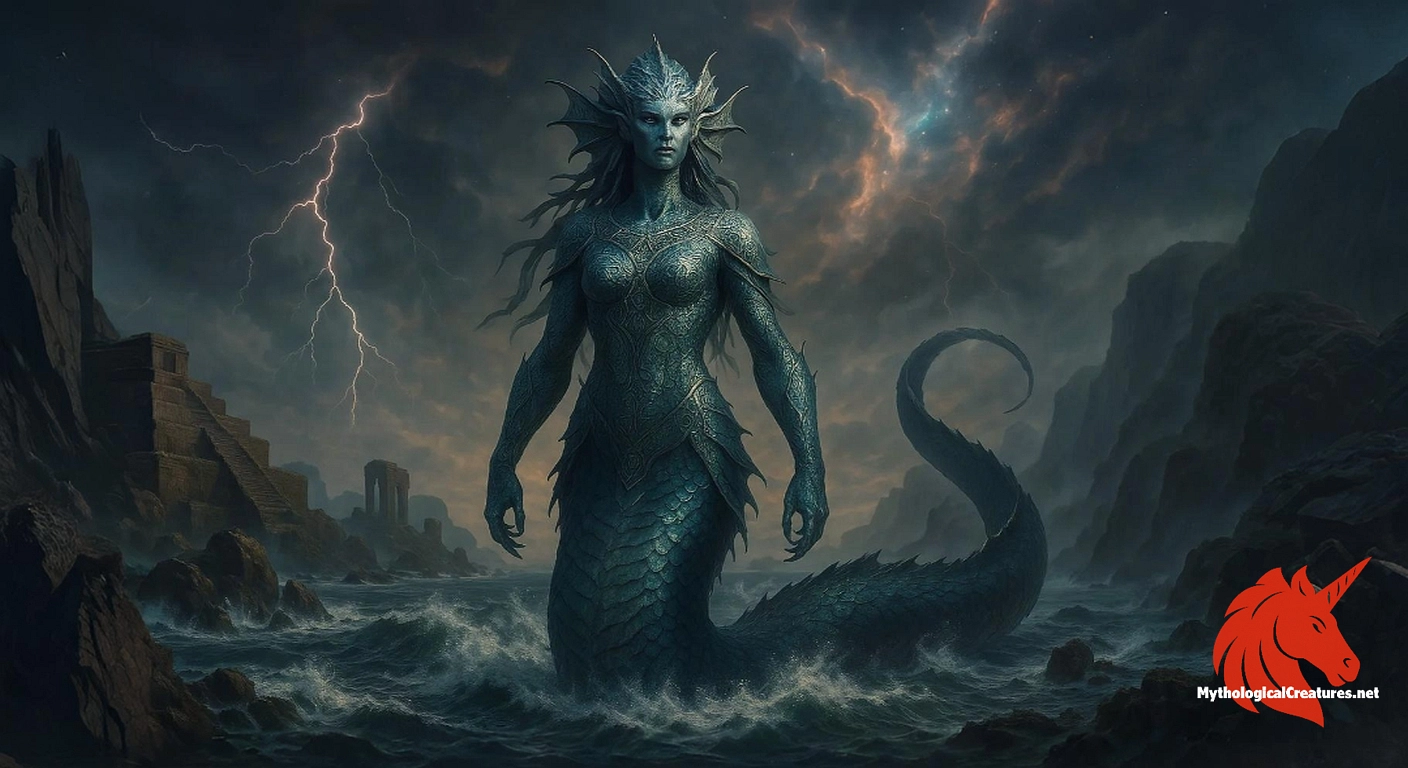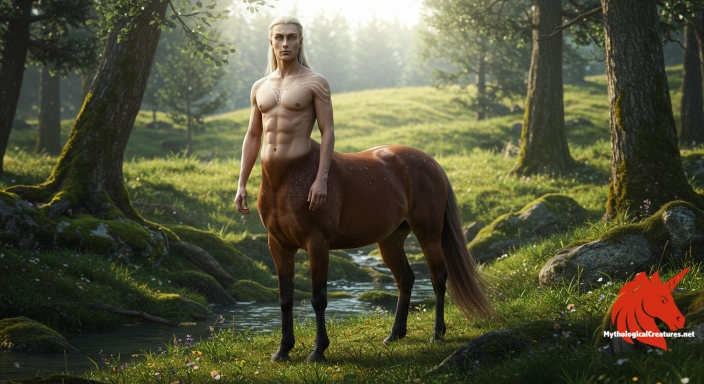Tiamat: Tiamat is the primordial sea goddess and embodiment of chaos in Mesopotamian mythology.

Tiamat
Tiamat - Tiamat's defeat and dismemberment by Marduk led to the creation of the cosmos, marking the triumph of order over chaos.
Origins & First Encounters
Tiamat emerges as one of the most enigmatic and primordial figures in the Mesopotamian pantheon, embodying both the chaos of the deep sea and the nurturing aspects of creation. Her origins are intertwined with the ancient narratives of a world born from the mingling of water and earth, symbolising an era when cosmic boundaries were yet undefined. First attested in the famed Babylonian epic Enūma Eliš, her myth laid the groundwork for the emergence of the gods and a new celestial order. Within this mythic framework, she is portrayed as the life force of the primordial sea, whose union with Apsu gave rise to a pantheon that encapsulated both the beauty and the fury of nature. Her role transcends simple personification, representing the ambiguous interplay between generative power and destructive chaos. The narrative surrounding her reflects the ancient Mesopotamian attempt to order the cosmos, transforming mythical turbulence into divine authority. Her character is marked by a dynamic duality, where aspects of tenderness in creation co-exist with the terror of unbridled natural forces. The blending of anthropomorphic and theriomorphic traits in her depictions mirrors the ancients’ efforts to reconcile the familiar with the sublime. Viewed through the lens of cultural transformation, Tiamat’s story is a sophisticated allegory that continues to intrigue and inspire. As a cornerstone of Mesopotamian myth, her legacy has firmly embedded her in the collective memory of ancient civilisation.
Source Texts & Tale Variants
The principal source for Tiamat’s myth is the Babylonian creation epic Enūma Eliš, which records her as a central figure in the struggle for cosmic order. Ancient cuneiform texts reveal that she was revered not only as a progenitor of the gods but also as the personification of the deep, untamed waters. The epic itself unfolds her narrative in vivid detail, presenting a complex tapestry of divine origin, conflict, and transformation. Alongside these core narratives, additional tablets and inscriptions from various Mesopotamian sites provide supplementary versions, each adding distinctive local colour to her character. Some story variants underscore her maternal role, emphasising her part in the continuity of life and creation. Other iterations highlight her transformation into a formidable adversary when affronted by the disruptive clamor of her divine offspring. Over time, scribes and priests adopted different perspectives that occasionally reinterpreted her features, reflecting evolving theological and cultural priorities. The multiplicity of sources creates a diverse and layered portrayal, resonating with themes of creation, conflict, and cosmic integration. Further, later interpretative traditions, both within and beyond Mesopotamia, have recast her image in new lights while remaining anchored to her original symbolism. These enduring narratives continue to offer deep insights into the ancient world’s conceptualisation of chaos and order.
Form & Powers
Tiamat is depicted with a strikingly complex physical form that mirrors her elemental essence and cosmic significance. In certain renditions, she exhibits anthropomorphic characteristics, such as pronounced breasts and a facial structure that hints at human familiarity, symbolising her role as a life-giver. At the same time, she is endowed with theriomorphic features, most notably an elongated, sinuous tail that evokes the image of a mighty sea serpent. Her body is often rendered as colossal and majestic, with scales that seem to shimmer like the hidden depths of a vast, primordial ocean. Other artistic representations infuse her form with exotic details such as multiple heads and elaborate horns, evoking both beauty and formidable menace. The duality in her appearance not only underscores her capacity to nurture life but also to unleash destructive, apocalyptic energies. Visual portrayals on ancient cylinder seals and temple reliefs capture this synthesis of human and beast, weaving together a narrative of both fertility and ferocity. In these depictions, every element—from the glint of her eyes to the curvature of her tail—has been meticulously crafted to embody the paradoxical nature of creation rising from chaos. The variations in her portrayal reflect the diverse artistic and symbolic interpretations of her role throughout Mesopotamian history. Ultimately, her physical characteristics serve as a powerful metaphor for the ancient understanding of nature’s unpredictable and multifaceted essence.
Regional Faces
While Tiamat is firmly rooted in Mesopotamian tradition, her myth has experienced various reinterpretations across different regions and cultural contexts. In Babylon, where her saga is most vividly recounted, she is seen as the embodiment of primordial chaos and the untamed sea, whereas neighboring cultures have sometimes merged her identity with local water deities. In certain Hellenic adaptations, echoes of her myth are observed in figures such as Thalattê, who similarly personifies the vast, enigmatic qualities of the ocean. Such regional shifts have allowed her image to evolve from that of a singular goddess to a composite symbol that melds diverse traditions. Variations in her iconography—ranging from sinuous sea-serpent depictions to multi-headed dragons—illustrate the adaptability of her myth across different artistic and religious landscapes. Local artisans and scribes incorporated familiar motifs, imbuing her with unique attributes that resonated with indigenous understandings of water, life, and the cosmos. As her story spread through trade and cultural exchange, elements of her narrative were adopted and adapted, resulting in a colourful array of interpretations. In some traditions, she appears more as an enigmatic force of nature rather than a maternal figure, emphasising the inherent unpredictability of the natural world. Such regional adaptations underscore how communities have historically reinterpreted myth to articulate local experiences and cosmological visions. This rich interplay of regional narratives has helped ensure that the legacy of Tiamat remains both diverse and deeply influential.
Cultural Parallels
The myth of Tiamat invites a compelling comparative analysis with other legendary figures that straddle the boundaries between creation and destruction. Similar primordial entities, such as the biblical Leviathan or the Greco-Roman embodiment of Chaos, echo her representation of the unbridled forces of nature. In both cases, these figures capture the eternal struggle between the emergence of order from the abyss and the persistence of chaos. Tiamat’s dismemberment by Marduk, and the subsequent reformation of the cosmos from her segmented form, find parallels in various Indo-European cosmogonies where the body of a primordial being gives rise to the world. This motif of divine dismemberment is a recurrent theme in global mythologies and highlights a universal attempt to explain the origins of nature through sacrifice and transformation. Moreover, modern fantasy literature and role-playing games frequently draw upon her image when creating multi-headed or draconic antagonists, thereby reinforcing her status within popular culture. The blending of benevolent and malevolent traits in her character also finds resonance in other mythic figures who symbolise the tension between nurturing creation and unleashing chaos. Comparative studies reveal that while cultures may differ in their ritual practices and aesthetic expressions, the underlying themes of cosmic balance and cyclical renewal remain consistent. Such cross-cultural dialogues highlight a shared human fascination with the paradoxical nature of existence. In essence, Tiamat’s narrative serves as a bridge between disparate mythological traditions, revealing deep insights into the universal language of myth.
Legacy & Modern Evolution
The legacy of Tiamat has undergone a remarkable evolution from ancient myth to modern cultural icon, reflecting shifting paradigms in the understanding of creation and chaos. Initially, she was revered as a powerful embodiment of the primordial sea, whose very existence symbolised both the potential for life and the threat of destruction. Over time, her myth was reinterpreted, not only serving as a cornerstone of Mesopotamian cosmogony but also influencing diverse artistic and literary traditions. In modern reinterpretations, her persona has been transformed into a multifaceted antagonist in fantasy novels, films, and role-playing games, where her stark duality continues to capture the public imagination. This modernisation of her character speaks to a broader cultural fascination with themes of conflict between order and chaos. Contemporary artists and writers often explore her narrative as an allegory for transformative change, echoing the ancient belief in the cyclical nature of creation and dissolution. Tiamat’s evolving image—from a primordial sea goddess to a symbol of apocalyptic power and raw natural energy—underscores the timeless appeal of her myth. Her story resonates with audiences not only as a mythological account but also as a profound reflection on the complexities inherent in the natural world and human existence. As academic scholars continue to unearth and reinterpret ancient texts, Tiamat’s presence in modern discourse remains a testament to the enduring power of myth. Ultimately, her legacy endures as an emblem of the eternal interplay between chaos and order in both the cosmos and the human psyche.
Interesting Fact
An enduring aspect of Tiamat's myth is the motif of body dismemberment, which has influenced countless creation myths across diverse cultures.
For indie creators
Give your myth project a permanent home
Indie authors, artists, small studios, and makers can secure an annual, non-intrusive sponsor slot that meets readers where they explore.
Obtain more informationQuick Creature Info
Origin:
Associations:
Our Mythic Legendary Rating:

Also Sometimes Known As:
Habitat:
Supernatural Powers:
Physical Attributes:
Abilities:
Behavior:
Weaknesses:
Lore:
Related Creatures, Tales or Lore
- LLeviathan
- JJörmungandr
- AApophis
References
Discover Another Mythical Legend You May Not Have Heard Of?
Uncover the mysteries of ancient folklore and expand your knowledge of legendary beings from cultures around the world.
Dare to Meet the Ipotane....
Curated by the Mythological Creatures Team
Series editor: Mythological Creatures Directory
Primary desk: Hellenic & Ancient Mediterranean Desk
(rev. November 2025)
